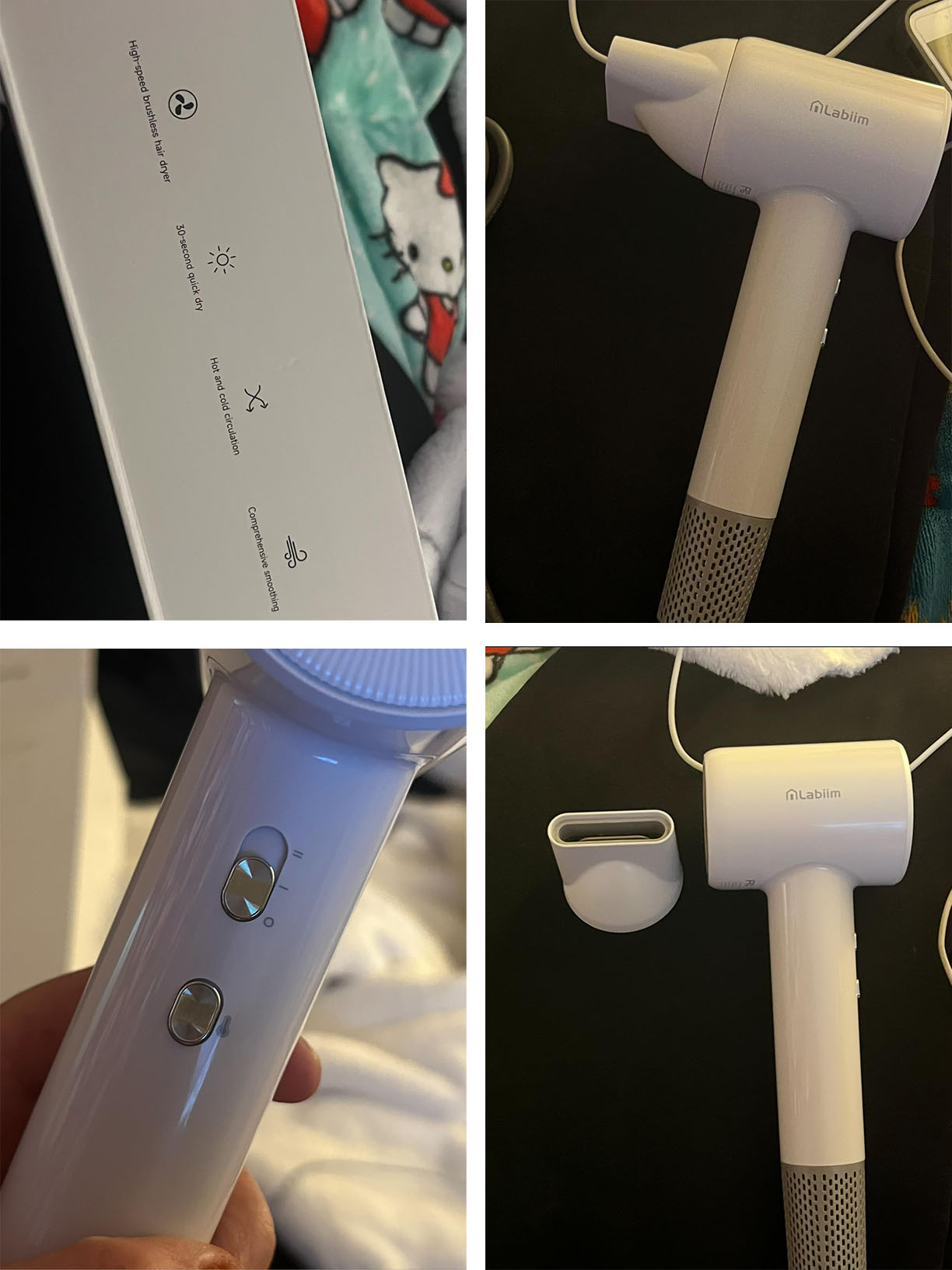For most of us, a hair dryer is just… a tool.
Turn it on, point it at wet hair, wait until dry.
But what if it could do more?
A truly effective hair dryer isn’t just about moving air—it’s about how that air interacts with your hair.
And two key technologies shape that experience: ionic and ceramic.
They’re often presented as competitors.
But in reality, they serve different—and complementary—purposes.
Let’s cut through the marketing and explore what each actually does, who benefits most, and why the future of hair drying lies not in choosing one over the other, but in combining them intelligently.

Ionic Dryers: Fast, Smooth, Frizz-Free
At their core, ionic dryers emit negative ions that break apart water molecules on the hair surface—speeding up evaporation without relying on extreme heat.
Key Benefits:
- Faster drying → Less exposure to heat = less structural damage
- Smoother cuticles → Negative ions neutralize static, seal the hair shaft, and enhance natural shine
- Reduced frizz → Especially effective for thick, curly, or humidity-prone hair types
“It’s super lightweight, quiet, and thanks to the high-speed brushless motor, it dries my hair in no time. The ionic tech makes my hair smooth, frizz-free, and shiny—no heat damage either.”
— Huy, Verified Customer
This is the immediate difference users notice: less time, less effort, better-looking hair.
But ionic isn’t always enough on its own—especially for finer or more fragile strands.
Ceramic Dryers: Gentle, Even, Protective
Ceramic technology focuses on how heat is generated and distributed.
Instead of metal coils that create uneven hot spots, ceramic heaters warm up gradually and radiate heat evenly across the hair surface.
Key Benefits:
- Consistent temperature control → No sudden spikes that damage cuticles
- Gentler on delicate hair → Ideal for fine, thin, or color-treated strands
- Long-lasting styles → Even drying helps maintain shape and smoothness
If your hair has ever felt “overcooked” or brittle after blow-drying, ceramic tech is designed to prevent exactly that.
It’s not about speed—it’s about safety and sustainability in your daily routine.
Why Choose One When You Can Have Both?
The real innovation in modern hair dryers isn’t choosing between ionic and ceramic—it’s integrating them for balanced performance.
Enter advanced models like the Labiim LA-05, engineered to deliver the best of both worlds:
| Feature | Benefit |
| Ionic Technology (200M ions/cm³) | Breaks down water fast → reduces drying time & frizz |
| Ceramic-Coated Nozzle | Ensures even heat distribution → protects fine or fragile hair |
| Brushless Motor (up to 110,000 RPM) | Powerful airflow without excessive heat → faster drying, less stress |
| Smart Temperature Control | Prevents overheating → maintains hair integrity over time |
This combination means:
- Thick hair gets smoothed and dried quickly
- Fine hair stays protected from heat stress
- All hair types enjoy shine, softness, and reduced breakage
“I bought this for my kids. It dries their hair super quick and doesn’t get too hot—perfect for little ones. The ionic tech leaves their hair soft, smooth, and frizz-free—and I’m obsessed with how quiet it is!”
— Dezmen Hansen, Parent & Verified Customer
That’s the sweet spot: performance without compromise.

Real User Insights: Beyond the Specs
We looked at what real people are saying—and the pattern is clear:
- Parents love it → Quiet operation and gentle heat mean no more bedtime battles.
- Frequent travelers praise it → Compact, foldable design fits effortlessly into any bag.
- Those with fine hair notice a change → Lightweight airflow + even heat = volume without damage.
- Everyone appreciates the finish → Smoother, shinier, healthier-looking hair—day after day.
“It’s strong yet quiet, with temperature control to protect hair. Lightweight, travel-friendly, and the ionic tech tames frizz for smooth, shiny strands.”
— Yanelys Garrido, Verified Customer
This isn’t just about features.
It’s about how the tool fits into real life—and improves it.
FAQs: Ionic vs Ceramic – Answered
Q1: Are ionic dryers safe for kids?
Yes. Faster drying with lower heat exposure makes them ideal for children’s delicate hair—especially when paired with even-heating ceramic components.
Q2: Do ionic dryers work for fine hair?
Absolutely—if used wisely. Keep heat settings moderate, and pair with ceramic tech to avoid over-drying. The result? Volume, shine, and protection.
Q3: Which is better for frizz: ionic or ceramic?
Ionic wins for immediate frizz reduction by sealing the cuticle.
Ceramic supports long-term smoothness by preventing heat damage.
Together, they form a complete anti-frizz system.
Q4: Does noise matter in a hair dryer?
More than you think. A quiet dryer (like the LA-05 at only 51 dB) transforms early mornings, late nights, and shared spaces—making care feel calm, not disruptive.
Q5: Do better dryers really make a difference?
Not all dryers are equal.
Cheap models get hair dry.
Better ones get it healthy, smooth, and ready to face the day—with less time, less damage, and more confidence.
So—ionic or ceramic?
If you have thick, curly, or frizz-prone hair, ionic will give you visible smoothing benefits.
If you have fine, damaged, or color-treated hair, ceramic’s even heat offers essential protection.
But the best choice?
👉 A dryer that combines both technologies intelligently—like the Labiim LA-05.
Because healthy hair isn’t about extremes.
It’s about balance: speed + gentleness, power + precision, care + convenience.
Once you experience what a truly thoughtful dryer can do—faster drying, less frizz, quieter mornings—you won’t just see the difference.
You’ll feel it in your hair, and in your day.
Better drying isn’t a luxury. It’s a reset button for your routine.
Explore the Labiim LA-05—where science meets simplicity.




